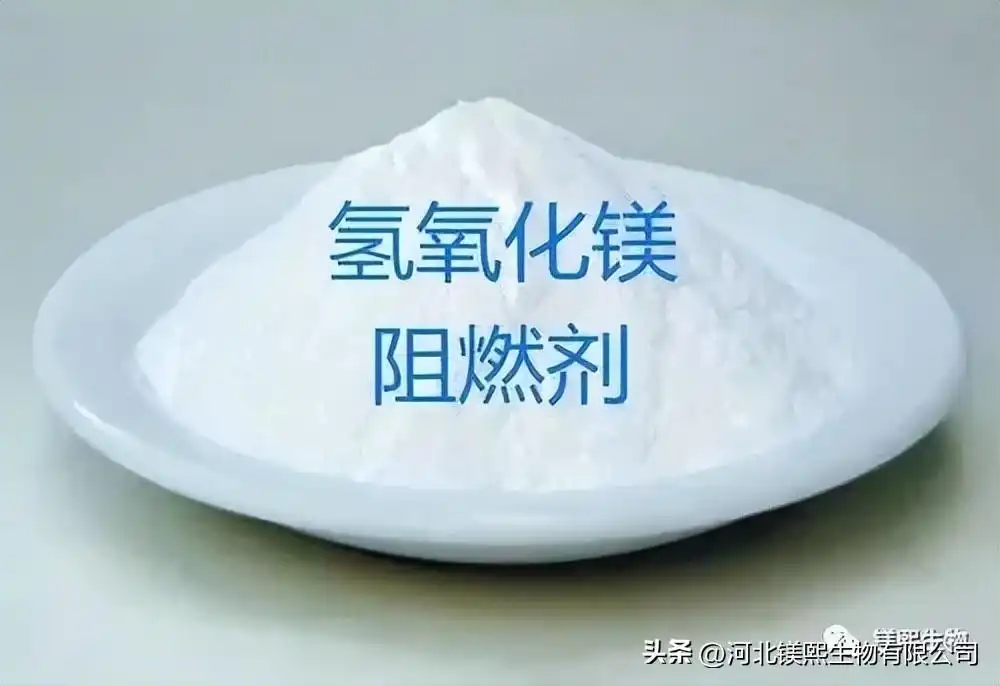Hebei Messi Biology Co., Ltd. stated that nano magnesium hydroxide has the molecular formula Mg (OH) 2, white fine powder, non-toxic, odorless, non-corrosive, relative density 2.36, refractive index 1.561, begins to decompose at 350 ° C, decomposes rapidly at 430 ° C, and decomposes completely at 490 ° C. It is soluble in strong acid solution and ammonium salt solution, and is difficult to dissolve in water. Compared with ordinary magnesium hydroxide products, nano magnesium hydroxide has special properties and applications, which are mainly manifested in:

1. Optical properties
When the grain size of metal materials is reduced to the nanometer level, the color mostly changes to black, and the particle size decreases. The light absorption ability of nanoparticles is proportional to their color. The quantum size effect of energy levels and the charge distribution on the surface of grains will also affect the light absorption process. The energy levels of conduction electrons in the grains often condense into very narrow energy bands, resulting in narrow absorption bands. Nonlinear optical effects have become another aspect of the study of the optical properties of nanomaterials.
2. Electromagnetic properties
The spacing between atoms in metal materials is proportional to the change in particle size. Therefore, when the metal grains are in the nanometer range, their density will increase as the spacing becomes smaller. In this way, the mean free path of free electrons in the metal will decrease, and the conductivity will also decrease. In terms of magnetic structure, coarse-grained materials and nanomaterials are very different. Generally, the magnetic structure of magnetic materials is composed of many magnetic domains, which are separated by domain walls, and magnetization is achieved by the movement of domain walls. In nanomaterials, when the particle size is less than a certain critical value, all grains present a single magnetic domain structure, and the coercive force becomes significantly larger. When the grain size of nanomaterials decreases, the magnetic order state of the core material will undergo fundamental changes. For example, a material that is ferromagnetic in a coarse-grained state can be converted into a superparamagnetic state when the particle size is less than a certain critical value.
3. Chemical catalytic performance
Due to the decrease in the particle size of nanomaterials, the number of atoms on the surface will account for a large proportion, the adsorption capacity will be enhanced, and the chemical activity will increase accordingly. Therefore, at room temperature, many metal nanomaterials undergo violent oxidation reactions in the air and burn. Non-polar nanomaterials exposed to the atmospheric environment will adsorb gases to form an adsorption layer. Using this characteristic, nanomaterials can be used to make gas-sensitive elements to detect different gases. The catalytic performance of metal nanomaterials is that they can catalytically break H-H bonds, C-C bonds, C-O bonds, C-H bonds, etc. under suitable conditions. The main advantages of nanomaterials as catalysts are no pores, no impurities, free selection of components, mild conditions, and easy use.
4. Thermal properties
When the size of the constituent phase is small enough, changes in various elastic and thermodynamic parameters in the restricted atomic system will lead to changes in the equilibrium phase. Hebei Messi Biology Co., Ltd. has analyzed through thermogravimetric experiments that the melting point of nano copper particles with an average particle size of 40nm has dropped from 1053℃ to 750℃. The melting point of nanomaterials is lower than that of similar coarse-grained materials, while the specific heat capacity is greater than that of coarse-grained materials.
